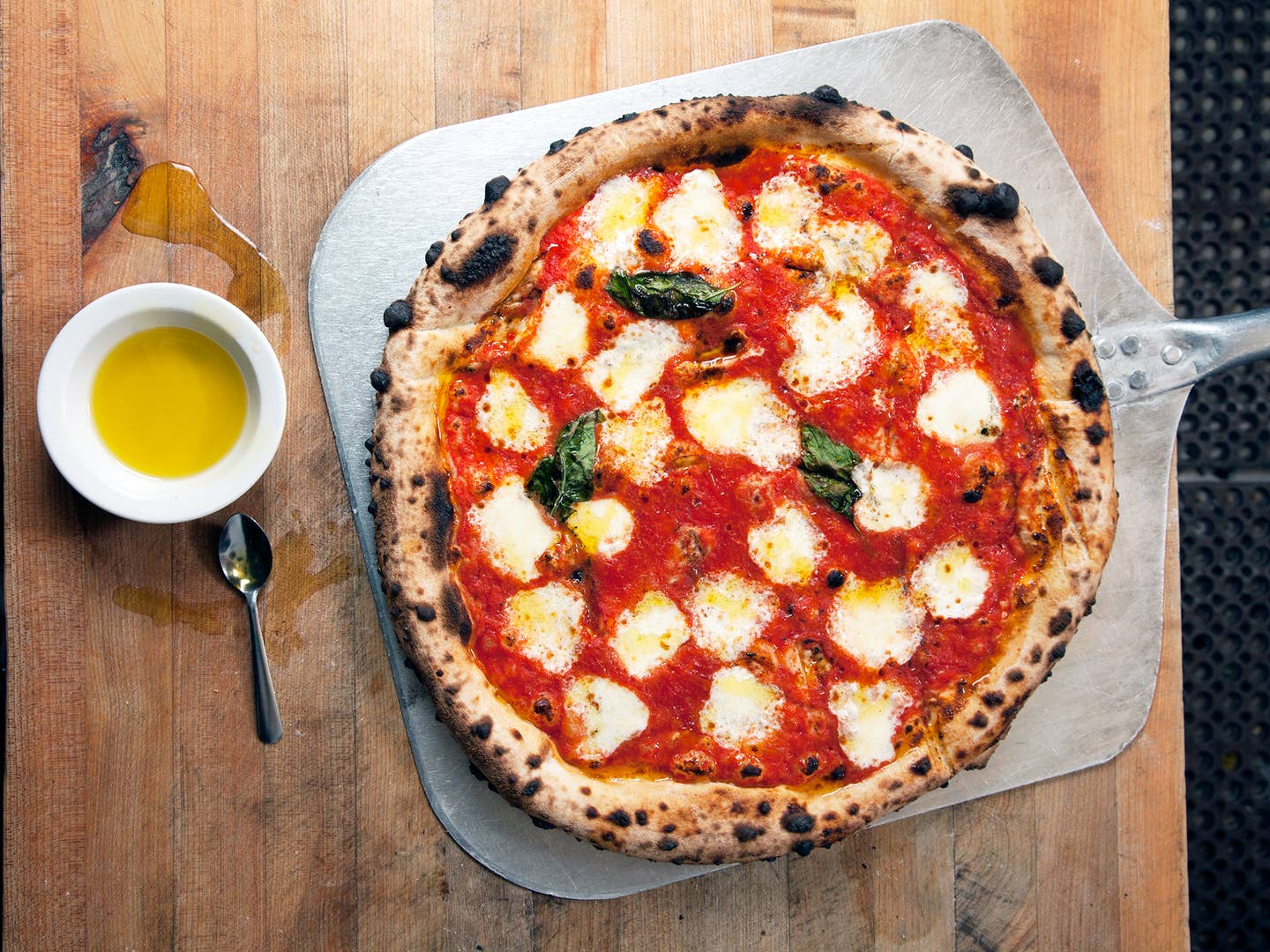
How Sending Newsrooms Pizza Became a Grand Journalistic Tradition
Please do feed the journalists
"Pizza for the Newsroom," a shot-from-the-hip fundraiser idea started by journalist Kevin S. Austin, had an initial goal of $2,000. The hook: send pies to publications, namely those doggedly covering the current scandal-ridden presidency, such as the New York Times and the Washington Post.
Austin, a former editor at the Atlanta Journal-Constitution, realized that journalists assigned to the Trump transition were constantly pushing late hours to make deadline on breaking stories (how about that Russian hacking scandal?). In two days, the donors blew through that target, clocking in at over $7,800. Obviously, the sentiment that the Fourth Estate needed some fuel to keep up the good work resonated with the fundraiser's 449 backers.
“You work at 100 miles an hour, five days a week,” said Austin. “And then when a big story hits, you have to double it.”
"Pizza for the Newsroom" is the most recent demonstration of a burgeoning journalist tradition: when covering chaotic with national reach, newsrooms send other newsrooms food. During the Boston Bombing in 2013, the Chicago Tribune sent the Boston Globe 60 pies; following their lead, the Baltimore Sun sent the Post and Courier boxes of pizza when covering the Dylann Roof church shooting, as did many of the nation's newspapers to the Orlando Sentinel during the Pulse nightclub shooting.
Austin’s project, which received suggestions from donors, will feed a total of 22 publications nationwide for their ongoing Trump coverage. Today, a cheese-oozing slice sent from one newsroom to another in a time of crisis provides a team sustenance, but more importantly, symbolizes camaraderie among hard-nosed journalists.
As a reporter at the Boston Globe in 2013, Erin Ailworth could not stop working the week of April 15th, 2013. The explosions at Boylston Street marathon finish line initiated a 24/7 news cycle: once she finished her own assignments, Ailworth, like the entire staff at the Globe, continued to help others report on providing readers updates, often forgetting to take breaks to eat, and emotionally distraught. Suddenly, when 50 pies showed up from Regina's courtesy of the Tribune, the Globe journalists knew their work was being appreciated.
“We don’t get thanked for a lot of the work we do,” AIlworth said. “We often get reader email—every so often it’s a nice one—but very few people take the time to say, ‘Wow, that was really informative.’”
Journalists are known to be pizza fiends. The greasy pies are easily deliverable en masse, and almost always backed by popular demand (and there's now a ton of gluten-free pizza, too). Mary Kelli Palka, an editor at the Florida Times-Union, wrote in an email her newsroom wolfs down pizza six times a year, with around 12 pizzas per gathering. Kevin Pang, a food editor at the A.V. Club and sender of pizza to the Globe, estimated that a journalist annually consume "a rough average of 12 or 13 [newsroom] pizza slices." However, Pang, the former Tribune reporter who organized the Globe's pizza delivery, explained in an email that gestures of kindness like "Pizza for the Newsroom" are about more than just feeding their colleagues.
“The food is really secondary—it's about giving kudos to our newsroom colleagues, acknowledging they [are] doing an exemplary job for their city,” Pang wrote.
Some people on social media saw "Pizza for the Newsroom" as misguided, arguing that instead of buying journalists pizza, Austin and the donors should have bought subscriptions. However, Patrick Garvin, a data journalist at the Globe explained that edible gifts satisfy a different type of need. "Pizzas do not pay the bills, but that good will goes a long way, especially if it's a visceral thing you can feel," said Garvin. A study by behavioral scientist Dan Ariely backs up Garvin's claims, finding that workers who were provided an "attaboy" text each morning or a free pizza voucher performed significantly better than workers who received a cash bonus. (Not insignificantly, those who received the cash bonus actually became less productive than before)
“A subscription is abstract,” Garvin said, “but pepperoni pizza is delicious.”
Keep Reading
Continue to Next Story










